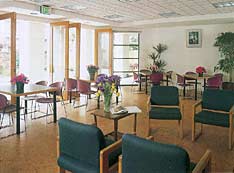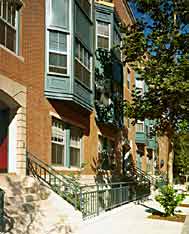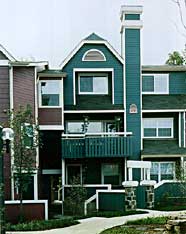|
Built to Last
Inexpensive materials can make any project look "cheap." Quality materials and finishes, on the other hand, contribute to the longevity of a project and to its ability to appreciate - not depreciate - in value. They also make a project easier to maintain, potentially reducing operating costs.
"Building in" energy and environmental efficiency - through better windows, insulation and equipment - reduces operating costs over the life of the building.
While the Design Advisor recommends doing everything possible to include high quality materials and finishes, it also recognizes that affordable housing developments usually face severe cost constraints. Not every product or system can be top of the line. In these circumstances, consider favoring exterior materials and finishes over interior ones when making tradeoffs. Likewise, consider favoring products and systems which are permanent and hard to replace over those that the occupant can replace on his or her own. (See 20 Steps to Design Quality, especially Step 15 and Step 16 for additional information.)
 |  |
To minimize long-term maintenance and enhance the pride of residents, durable materials were emphasized throughout this San Francisco development. The facade has a concrete base with slat and glass-block infill; the upper stories are wood frame with painted stucco. Ground floor public spaces are finished with slate and cork flooring, with carpet used in areas that experience less foot traffic. A local nonprofit partner, which also operates a furniture shop, provided durable kitchen cabinets and the custom tables design for the community room."
(555 Ellis Street)
|
This Boston development was built with quality materials inside and out. The result is a property that is easier to maintain and, according to the developer, has had a significant positive impact, physically and socially, on the neighborhood. The key, according to the developer, is to design affordable housing from the beginning "with the highest quality products and amenities. It is virtually impossible to significantly upgrade already specified products and amenities in a development, even when funding is available."
(Roxbury Corners)
|
 |
Heat pumps, triple pane windows and other energy saving features will mean lower utility bills for the residents of this Montgomery County, Maryland development for years to come.
(Timberlawn Crescent)
|
|
|


